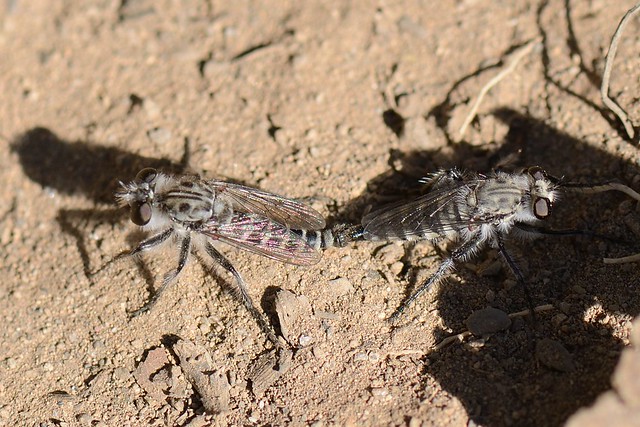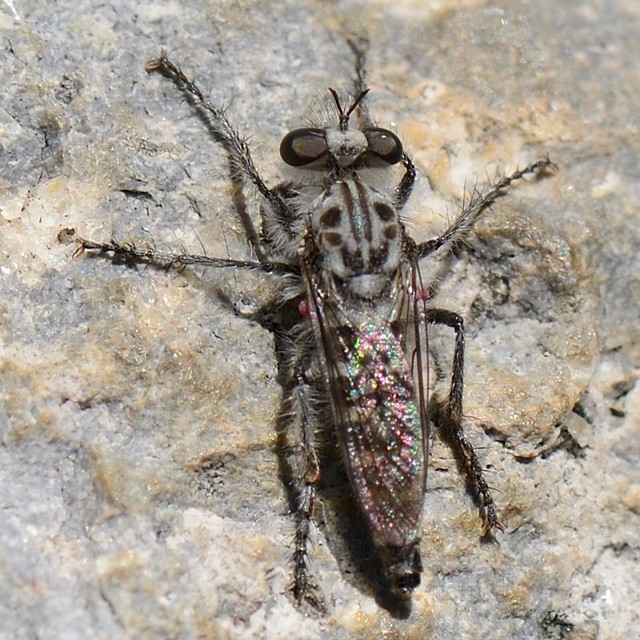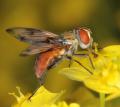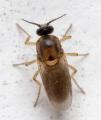Diptera.info :: Family forums :: Asilidae Forum
|
California pair (= Cyrtopogon)
|
|
| John Carr |
Posted on 07-10-2012 23:55
|
|
Super Administrator Location: Massachusetts, USA Posts: 10486 Joined: 22.10.10 |
In the mountains of northern California (USA), elevation 2300 meters, August 30, 2012. (Click to enlarge, or view on Flickr.) Edited by John Carr on 08-10-2012 17:27 |
| ChrisR |
Posted on 08-10-2012 08:29
|
|
Super Administrator Location: Reading, England Posts: 7703 Joined: 12.07.04 |
I might be wrong but could they be Therevidae?
Manager of the UK Species Inventory in the Angela Marmont Centre for UK Biodiversity at the Natural History Museum, London. |
| John Carr |
Posted on 08-10-2012 13:31
|
|
Super Administrator Location: Massachusetts, USA Posts: 10486 Joined: 22.10.10 |
I was wondering that too but convinced myself of Asilidae. |
| Eric Fisher |
Posted on 08-10-2012 17:16
|
|
Member Location: California Posts: 435 Joined: 19.05.06 |
John, These are Cyrtopogon sp. (I puzzled over them when I first saw them in BugGuide!) The male, on the left, looks very much like C. rattus. However, the female does not fit that sp. (the abdomen should be nearly all whitish tomentose, with minimal shiny-black, at the edges of the terites). Close to C. sudator also (except the female doesn't quite fit either). So, it remains a puzzle as to which Cyrtopogon it is. Possibly the female has aberrant coloration? Eric |
|
|
|
| John Carr |
Posted on 08-10-2012 19:08
|
|
Super Administrator Location: Massachusetts, USA Posts: 10486 Joined: 22.10.10 |
I saw this similar fly a few miles away the next day: Does the male of my original pair have a modified fore tibia? It appears to have a bulge. Edited by John Carr on 08-10-2012 19:09 |
| Eric Fisher |
Posted on 09-10-2012 02:05
|
|
Member Location: California Posts: 435 Joined: 19.05.06 |
This one is Cyrtopogon evidens, a female; quite similar to the previous pair, but with a slightly different design on the scutum and fewer white setae on the legs. These (along with about 25 other mainly California spp.) belong to a sub-group of the genus that share a flat, all tomentose scutellum, a face that is less gibbose, and overall are less setose and more tomentose. This sub-group all lack the striking, dimorphic ornamentation and modifications on the body that many other Cyrtopogon often have. |
|
|
|
| Jump to Forum: |














